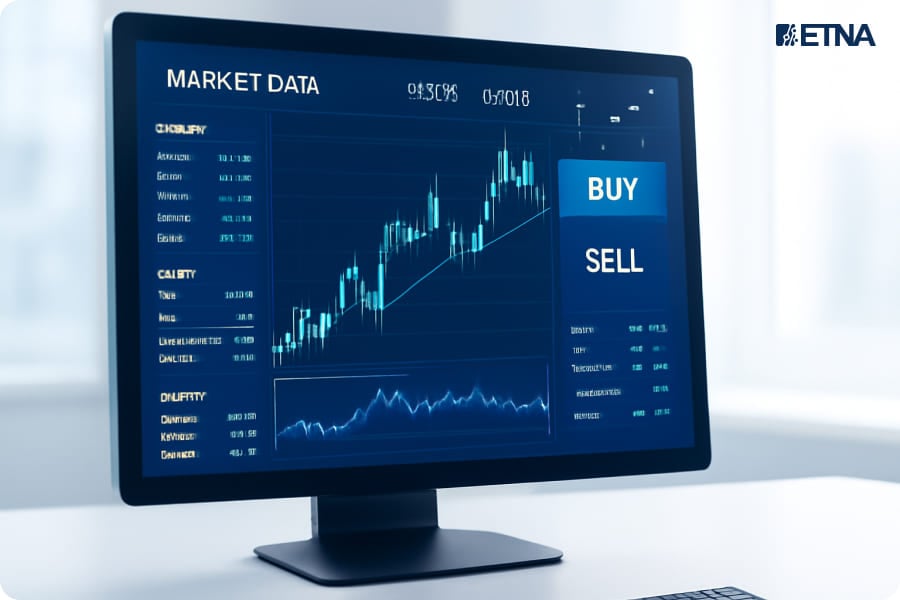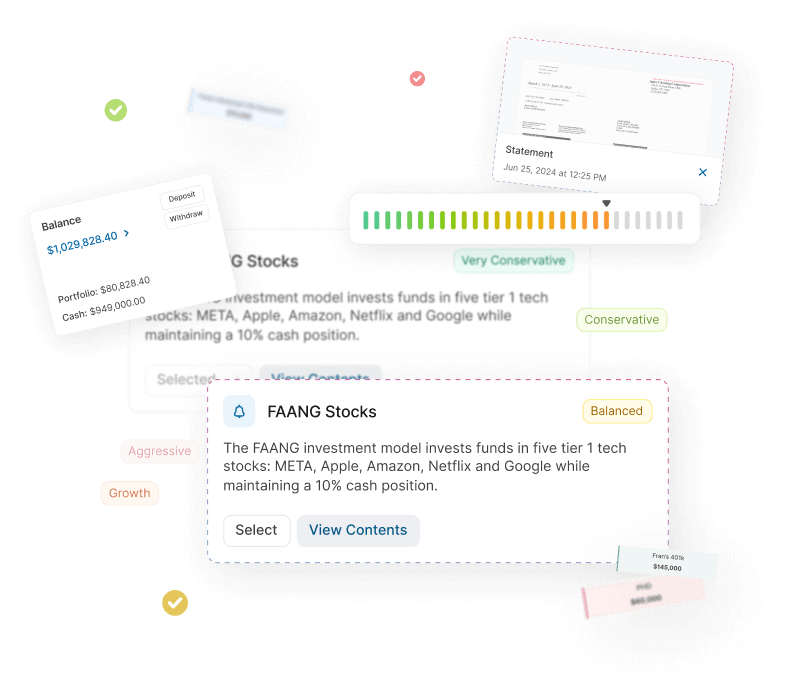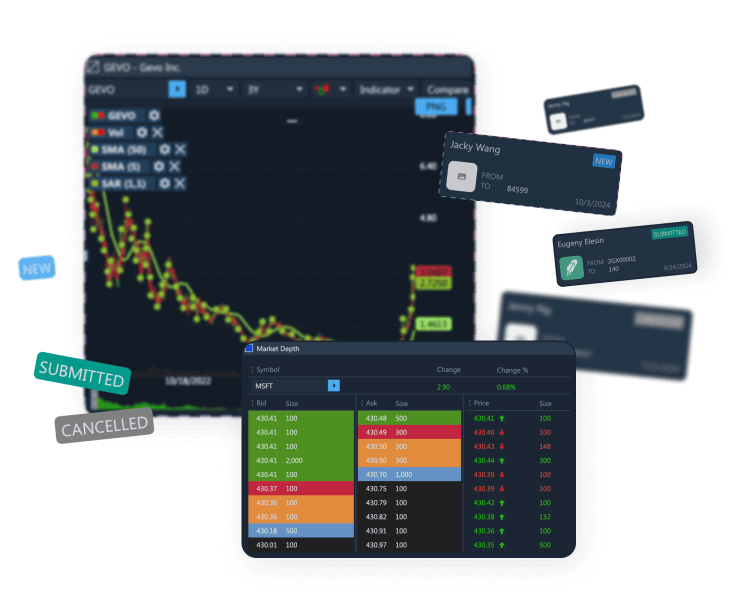The convergence of artificial intelligence and financial markets represents one of the most significant technological disruptions in modern finance. As we advance through 2025, AI stock market prediction has evolved from experimental algorithms to a mission-critical infrastructure that’s fundamentally reshaping how broker-dealers forecast market movements, assess risk, and automate investment decisions. With the global AI trading platform market projected to reach $69.95 billion by 2034, growing at a remarkable 20.04% compound annual growth rate, the transformation of financial services is accelerating at an unprecedented pace.
The statistics paint a compelling picture of this revolution: artificial intelligence now drives approximately 70% of total trading volume in U.S. stock markets, while the predictive AI market for stock trading alone is expected to surge from $831.5 million in 2024 to $4.1 billion by 2034. This represents far more than incremental improvement it signals a fundamental reimagining of how financial institutions operate, compete, and deliver value to their clients.
For broker-dealers and registered investment advisors (RIAs), the implications extend well beyond simple automation. AI is transforming the very foundations of investment decision-making, from portfolio construction and risk management to client engagement and regulatory compliance. The technology promises not just efficiency gains, but entirely new capabilities that were previously impossible at scale.
Key Takeaways
Market Leadership: Trade Ideas’ Holly AI generates 61% returns vs S&P 500’s 32%
Accuracy Rates: Neural networks achieve 83% directional prediction accuracy
Cost Impact: AI reduces compliance operational costs by 60%
Adoption Scale: AI processes over 20 million financial documents daily
How Does Artificial Intelligence Stock Prediction Actually Work? The Technology Behind AI Stock Price Prediction Core Technologies:
Neural Networks (LSTM): Process sequential time-series data for price movement analysis
Natural Language Processing: Analyzes earnings calls, SEC filings, news, social media sentiment
Reinforcement Learning: Continuously adapts strategies based on market feedback
What Data Do AI Predictors Analyze? Data Processing Scale:
Danelfin: 10,000 features per stock daily (600+ technical indicators, 150 fundamental metrics)
Sentieo: 20 million financial documents from 64,000 companies daily
Data Categories:
Traditional financial data (price, volume, earnings)
Alternative sources (satellite imagery, shipping patterns, patents)
Sentiment analysis (news, social media, analyst reports)
Macroeconomic indicators (rates, inflation, employment)
Is AI Stock Market Prediction Accurate? Setting Realistic Expectations Accuracy Statistics:
Minor corrections (5-10%): 80% prediction accuracy
Major crashes (>20%): 37% prediction accuracy
Directional prediction: 83.43% average accuracy across 7 global indices
FTSE 100: 93.48% directional accuracy
Performance Benchmarks:
Holly 2.0: 33% annual returns
Danelfin strategy: 263% returns (2017-2024) vs S&P 500’s 189%
The Best AI Stock Prediction Apps & Tools in 2025 1. ETNA Trader Best for Building a Custom AI Stock Predictor Key Features:
Multi-data provider integration capabilities
Customizable algorithm framework (regression to neural networks)
Risk management integration with regulatory compliance
Comprehensive backtesting with scenario analysis
Multi-asset trading (equities, options, fixed income, alternatives)
2. TrendSpider Best for AI-Powered Technical Analysis & Prediction AI Technology:
AI Strategy Lab: Multiple algorithms (Naive Bayes, Logistic Regression, Random Forest)
Sidekick AI: Conversational chart analysis and real-time insights
Pattern Recognition: Automated identification of chart patterns, trendlines, and Fibonacci levels
Core Capabilities:
Multi-timeframe analysis synchronization
Custom prediction model development
Real-time alerting system
3. Trade Ideas Best for AI-Generated Day Trading Predictions Holly AI System:
Holly Classic: 70 strategies, 60%+ win rates, 2:1 risk-reward ratios
Holly 2.0: 33% annual returns, aggressive trading approach
Holly Neo: Real-time pattern recognition for intraday trading
Performance Data:
Millions of daily backtests on 8,000+ U.S. stocks
60+ algorithmic strategies
3 consecutive years outperforming S&P 500
4. Danelfin Best for Simple AI-Based Stock Scores AI Technology:
900+ fundamental, technical, and sentiment data points daily
10,000 daily indicators across U.S. and European stocks
Simple 1-10 AI Score for 3-month outperformance probability
User Experience:
Explainable AI with decision transparency
Multiple investment timeframes
Free tier with basic functionality
How to Choose the Right AI Stock Prediction Tool for You For Developers vs. For Investors: What’s the Difference? Developer-Focused Platforms (ETNA Trader):
Custom AI model creation flexibility
Significant technical expertise required
Ideal for larger broker-dealers with tech teams
Investor-Focused Solutions (Danelfin):
Ease of use and immediate applicability
No deep technical knowledge required
Suitable for smaller firms and practitioners
Hybrid Approaches (TrendSpider):
Pre-built AI capabilities with customization options
Appeals to firms wanting analysis tools with strategy development
Key Features to Look for in an AI Stock Predictor Essential Criteria:
Data quality and breadth (traditional + alternative sources)
Transparency and explainability for regulatory compliance
Integration with existing custodial/portfolio management systems
Verifiable performance track record across market conditions
Robust audit trails and compliance monitoring
Understanding Costs and Subscription Models Pricing Structure:
Entry-level: Free tiers (Danelfin) to basic retail plans
Enterprise: Tens of thousands annually
Performance-based: Success fees aligning vendor-client incentives
Implementation: Training, integration, and maintenance costs
The Pros and Cons of Using AI for Stock Prediction Advantages of AI Stock Prediction
Speed/Scale: Analyze thousands of securities simultaneously
Pattern Recognition: Detect complex correlations across variables/timeframes
Emotion-Free Decisions: Eliminate psychological biases (fear, greed)
Continuous Learning: Refine models based on market outcomes
Cost Efficiency: Automate research/analysis functions
Limitations and Risks
Black Swan Events: Struggle with unprecedented market disruptions
Data Dependency: Only as good as training data quality
Model Opacity: “Black box” challenges for compliance/communication
Overfitting Risk: Over-specialization reduces adaptability
Systemic Risk: Correlated behavior amplifying volatility
Regulatory Challenges: Evolving governance/bias prevention requirements
Regulatory Landscape and Compliance Challenges Current Regulatory Framework
U.S. Regulation:
FINRA Notice 24-09: AI tools must be supervised like other systems
SEC AI Task Force: Accelerating responsible AI integration
Technology-neutral approach: Existing rules apply to AI systems
Compliance Requirements:
Supervision and oversight policies at enterprise/individual levels
Comprehensive audit trails and decision-making logs
Risk management for cybersecurity, bias, operational resilience
Marketing content meeting regulatory standards
Emerging Challenges
Algorithmic Bias: Fairness testing and bias detection requirements
Market Manipulation: Concerns about coordinated trading strategies
Systemic Risk: Concentration of AI decision-making requiring enhanced monitoring
Impact on Broker-Dealer Operations Transforming Portfolio Management
Automated Rebalancing: Continuous monitoring and optimization
Multi-Criteria Optimization: Hundreds of variables (risk, ESG, taxes)
Dynamic Risk Management: Real-time exposure monitoring with automatic adjustments
Enhancing Client Service and Engagement
Personalized Advice: Individual profiles, goals, risk preferences
24/7 Support: AI chatbots for portfolio/market queries
Predictive Needs: Anticipate liquidity requirements and preference changes
Operational Efficiency Improvements
Document Processing: Automated classification and information extraction
Compliance Automation: Violation detection, report generation, audit trails
Cost Reduction: 60% reduction in compliance operational costs
The Future of AI Stock Market Prediction Emerging Technologies and Capabilities
Quantum Computing: Exponentially larger datasets and complex algorithms
Advanced NLP: Real-time financial document analysis and misconduct detection
Autonomous Trading: Integrated ecosystems with minimal human intervention
Democratization of AI Tools
Smaller Firm Access: Cloud-based platforms leveling competitive field
No-Code Development: Natural language and drag-and-drop interfaces
Cost Reduction: Declining implementation costs for all firm sizes
Integration with Emerging Market Structures
DeFi Integration: Decentralized finance market analysis and participation
ESG Investing: Environmental, social, governance factor integration
T+0 Settlement: Faster decision-making for real-time settlement
Final Word: Enhancing Your Strategy with AI Stock Prediction Strategic Imperatives:
Market Reality: 70% of U.S. trading volume driven by AI, $69.95B market by 2034
Competitive Advantage: Early adopters establishing significant market position
Implementation Success: Requires careful planning, governance, regulatory compliance
Hybrid Approach: Combine AI analytical power with human insight and oversight
The question is no longer whether to adopt AI, but how quickly and effectively firms can integrate these technologies for superior client outcomes.
Frequently Asked Questions (FAQ) What is the most accurate AI stock predictor?
Trade Ideas Holly AI: 61% returns vs S&P 500’s 32%
Neural Networks: 83% directional prediction accuracy
Performance varies: Market conditions and prediction timeframes impact accuracy
Can AI truly predict stock prices?
Pattern/Direction Strength: 80% accuracy for minor corrections, 37% for major crashes
Limitation: Best viewed as analytical enhancement tool, not perfect prediction system
Timing Challenges: Struggles with unprecedented events and precise timing
What is the best free AI stock predictor?
Danelfin: Comprehensive free tier analyzing 900+ data points daily
Performance: 263% returns since 2017 vs S&P 500’s 189%
Coverage: Thousands of U.S. and international stocks
Is using AI for stock market prediction legal?
Legal Status: Yes, with existing financial regulation compliance
Requirements: Proper oversight, recordkeeping, risk management procedures
Restrictions: No market manipulation, transparency in decision processes









